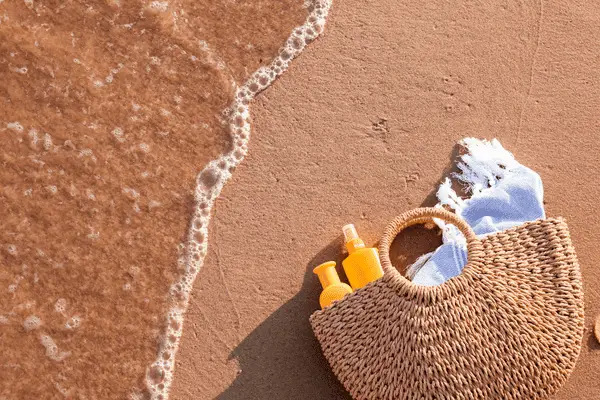Sunscreen or sunblock is used in different forms such as lotions, gels, sprays, foams, and sticks to absorb or reflect the sun’s harmful ultraviolet rays protecting us from sunburns.
Usually, two types of sunscreens are available in the market, chemical sunscreens and mineral sunscreens. Chemical or organic sunscreens absorb UV radiations whereas, physical or mineral sunscreens form a layer on the top of the skin which acts as a shield and reflects harmful rays.

Does Sunscreen Affect Coral Reefs?
Yes. Recent studies showed that chemicals in sunscreens like oxybenzone, octinoxate, benzophenone, titanium, and zinc oxides become a part of our environment. Sunscreens will not stay on our skins forever. It enters the water bodies when we swim or take a shower. These chemicals badly affect marine life and are even deadly for coral reefs.

Coral reefs are an integral component of the environment and are a valuable economic and environmental resource. Changing climate, pollution, global warming, diseases, and unsustainable fishing practices are known threats for coral reefs. Recently, researchers have discovered that chemicals present in most of the skincare products including sunscreens drastically decrease coral reef production. According to US National Park Service, every year 4-6 thousand tons of sunscreen enter coral reef areas globally.
Sunscreen affect coral reefs differently
The effect of sunscreen is completely different for coral reefs as compared to humans. Oxybenzone is a fundamental part of sunscreens and is highly toxic for young coral reefs. It is known to be causing damage to its DNA and disrupts endocrine system. Even a small amount of this chemical can consume nutrients of coral reefs.

Bleaching is a process in which coral reefs lose their colour in the absence of a symbiotic relationship. Though it is primarily due to the rise in temperature, this particular chemical also increases the bleaching process.
Hawaii banned chemical sunscreens
These adverse effects led to the banning of chemical sunscreens containing oxybenzone and octinoxate in the Pacific nation of Palau and Hawaii from 2020 and 2021 respectively. Similarly, authorities of the Caribbean islands of Bonaire, Aruba, and Virgin islands in America are also considering banning sunscreens that have oxybenzone, octinoxate, and octocrylene from 2020.
What can we do to reduce the impact of sunscreen?
We cannot stop wearing sunscreen as it protects against skin-burns and cancer. But there is a dire need to carefully select and consider the type of sunscreen while buying. Following are a few suggestions that might help regarding this issue:
- Increase awareness. Being informed about the product, its chemical constituents, and its potential effects.
- Choose mineral sunscreens instead of chemical ones. Titanium and zinc oxides do not harm coral reefs. Therefore the priority should be given to sunscreens containing these.
- With increasing knowledge, the demand for reef-safe sunscreen has also increased. Make sure you look for such a product as it is now easily obtainable.
- Favor lotion-based sunscreens instead of aerosols. Spraying such a product leaves residue in the air and on sand which is quite unhealthy.
- It’s always better to avoid using sunscreens. You can use fewer products by avoiding swimming during intense mid-day sun, wearing a long-sleeved shirt, and spending more time in the shade.
- The government can encourage developers and grant financial incentives for eco-friendly sunscreen manufacturing.
Final thoughts
The coral reef is part of the environment and sometimes we harm it without noticing. A small change in our lifestyle will help to keep our planet beautiful.
